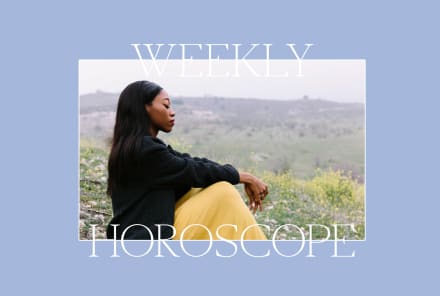Advertisement
Feeling Stuck? Here's An Exercise To Help You Discover Your Life's Purpose


Are your needs for general physical health, safety, and human connection basically met? Are you looking for something else—an understanding of your purpose beyond the basics? Do you know that you have work to do in the world but you're not quite sure what it is or how to do it?
Successfully bringing your gifts into the world has been called self-actualization by psychologist Abraham Maslow, who also emphasized the importance of self-transcendence—joining something larger than yourself to make positive changes in the world. All intelligent and reasonably sane people, as long as they have their basic needs met, have the desire to achieve both self-actualization and self-transcendence. To do both is to pursue your calling.
If you're reading this, you might already know this—but pursuing your calling is not logical—it's experimental. As a scientist, I see it as deeply scientific.
Most of us were trained at a young age to think that science is about everything other than ourselves. For example, disciplines that study human experience and behavior, such as psychology, anthropology, and sociology, are not usually taught prior to college. Meanwhile, physics, chemistry, and biology are taught to middle-schoolers and sometimes even younger children. So our first impressions about what is called "science" don't include the exploration of human nature or human purpose.
Most of us have been taught that the scientific method is a relatively boring set of steps that we should memorize and maybe try to use the night before we have to turn in our lab notebooks for some high school chemistry or biology course. Develop a hypothesis; test it by running an experiment; observe the data and form conclusions; try to write down what we think the teacher wants to hear.
This version of the method is remarkably powerful. But it's not the heart of the scientific method in its original form. It's not what I call the deep scientific method, which I believe is used by virtually every scientist who actually does experiments and creates models.
The deep scientific method goes like this:
- Define a process you're interested in,
- Energize the process by building a model of it, and
- Engage the process and watch it change the world.
The deep scientific method is magical. It is play with a purpose. This kind of play doesn't just help us harness chemical transitions, predict astronomical events, and cure medical conditions. It can also be applied to the processes we are focused on here: self-actualization and self-transcendence.
What if you're the scientist, and the process you're investigating is your calling? You would have to do the work of defining your calling so that you have a clear idea about what it is, energizing your calling by understanding it thoroughly, and engaging your calling in the world in a playful way, which you can continue to do for the rest of your life.
There is an assumption here, and I think it's a good idea to state it clearly. Your calling works almost by itself once you handle the sludge and impediments that are blocking its progress. You can think of your calling as a car that's already been built. You just have to dig it out from under a pile of garbage, activate the engine, clear the road, and go.
Every one of us has a calling that is unique, possible, life-giving, and important. In a way, your calling is simple: It is to do what you do when you are living as who you are. We all share this generic calling. Your unique calling can be found in the all-important details, which you can use the deep scientific method to work out. C'mon—I'll race you to the start line.
Here's the first experiment, in which you'll work with your "Inner Lab"—that place inside yourself that you'll set up now, so it's ready for your future discoveries.
Say yes to your inner lab.
The point of this experiment is to say yes to everything you think and feel about your inner lab and to notice what those thoughts and feelings are.
1. Prepare.
Set a five-minute timer and make an overarching intention to tune in to your intuitions about what you need in your inner lab.
2. Say yes to your body's wisdom.
Ask your body what it needs in your inner lab to feel safe and supported. Feel your whole body—everything. Feel the parts that are sore and the parts that are relaxed and free. Cuticles and nose hairs are not off-limits! As you feel each part, don't try to change it. Instead, just say yes to yourself or even aloud.
3. Say yes to your mind's wisdom.
Ask your mind what it needs in your inner lab to feel safe and supported. When thoughts, ideas, or feelings about your inner lab come up, don't try to name them or change them. Just say yes. As you say yes to an idea or thought, know that this does not necessarily mean you agree with it. For example, if you have a thought that you want your inner lab to have plush carpeting and wood paneling, you can say yes to it—as in, "Yes, there is a part of me that really wants plush carpeting and paneling on the walls of my inner lab." But you don't need to act on any desires, images, or thoughts right now. If the timer dings and you are not yet done, keep going.
4. Record your observations.
Write your observations in your lab notebook. What thoughts and feelings did you discover? Does your intuition tell you what these thoughts and feelings might reveal about what your inner lab looks and feels like?
5. Listen to your intuition.
Set a second overarching intention to listen to your intuition in a way that's both easy and fun. Take a moment to ask your intuition a few questions you might want to know about your inner lab and listen carefully to any answers that appear. It is a good idea to ask where you'll "put" your laboratory—is it located in a part of your body? Or outside of it? Is it in a beautiful garden in your mind? A private cottage out back? Does your lab show up when you close your eyes or when you go into your office or when you say a certain phrase? Is there anything you can do physically to get yourself situated in your inner lab? What about getting out of it? Any other questions? You don't have to receive any answers at all, and if you do get some answers, you don't have to be certain of them to go on to the next step.
6. Try entering your inner lab.
You have used your intuition to get some good ideas about your inner lab; now it's time to determine if you can access your inner lab and see what it's like. Set a timer for another five minutes.
7. Observe your experience.
Now set a third overarching intention to test out your inner lab. See the location of your inner lab—as shown to you by your intuition or wherever your inner lab "appears" now. Do you like it there? If not, move it someplace that feels better. Enter your inner lab in the way your intuition showed you or in the way that is just happening right now. Did it work? If not, try another way to gain entry.
Once in your lab, check out its decorations (if any), hear its sounds, meet the people there (if any), look at what's around you (furniture, plants, equipment). Ask yourself if you want to change anything. If you do, change it. Once you feel that you absolutely love it and you feel safe, go ahead and try to leave your inner lab. If whatever you try doesn't work, try something else.
8. Record your results.
Now that you've tested out your inner lab space, write down in your lab notebook what you learned about your inner lab. You can come and go whenever you like, and you can remain there for as long as you want.
Watch Next
Enjoy some of our favorite clips from classes
Enjoy some of our favorite clips from classes
What Is Meditation?
Mindfulness/Spirituality | Light Watkins
Box Breathing
Mindfulness/Spirituality | Gwen Dittmar
What Breathwork Can Address
Mindfulness/Spirituality | Gwen Dittmar
The 8 Limbs of Yoga - What is Asana?
Yoga | Caley Alyssa
Two Standing Postures to Open Up Tight Hips
Yoga | Caley Alyssa
How Plants Can Optimize Athletic Performance
Nutrition | Rich Roll
What to Eat Before a Workout
Nutrition | Rich Roll
How Ayurveda Helps Us Navigate Modern Life
Nutrition | Sahara Rose
Messages About Love & Relationships
Love & Relationships | Esther Perel
Love Languages
Love & Relationships | Esther Perel

















